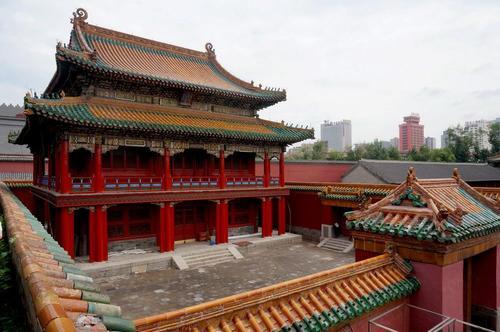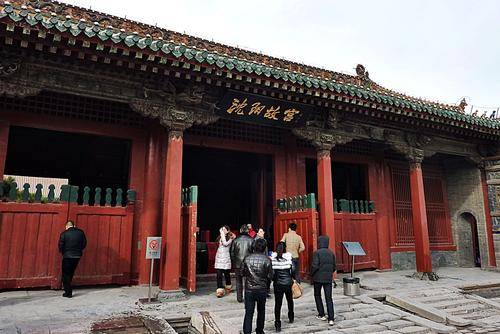In 1636 AD, the Later Jin dynasty changed its name to the Qing dynasty, and the Chongzheng Hall was held here. The most important building in the Shenyang Imperial Palace is the Chongzheng Hall. The entire hall is a five-bay, nine-purlin hard mountain-style building, entirely made of wood. There are partition doors opening north and south, with stone railings in front and back. The roof is covered with yellow glazed tiles, inlaid with green trim, and the main ridge is adorned with colorful glazed dragon patterns and flame pearls. The glazed tiles of the Beijing Imperial Palace are yellow, while those of the Shenyang Imperial Palace are green with yellow trim. There are significant differences between the Shenyang Imperial Palace and the Beijing Imperial Palace.
To the east of the Shenyang Palace Museum, there is another hall called Dazheng Hall. So, what is the difference between Chongzheng Hall and Dazheng Hall? Chongzheng Hall, like the main hall of the imperial palace, is the place where the emperor conducts daily state affairs, commonly referred to as 'holding court'. However, Dazheng Hall is a large 'grand hall' used for major assemblies and is rarely used under normal circumstances.
Phoenix Tower was the tallest building in Shengjing at the time and also the highest point of the palace. From the top of Phoenix Tower, one could overlook the entire city of Shenyang. The beams and frames of the tower are decorated with red dragon paintings. The central room is adorned with Sanskrit, phoenixes, and the seal script 'Longevity without Boundaries'. It was a common place for the emperor and empress to read or relax. The ground floor serves as the main gate of the inner palace, functioning as the passageway in and out of the palace area. In fact, not only Phoenix Tower, but all palaces in Shengjing were built on platforms over three meters high, surrounded by circular paths for patrolling, resembling a closed fortress. This design aligns with the traditional customs of the Manchu ancestors, the Jurchens, who lived in mountainous areas for a long time.
Qingning Palace is the 'Central Palace' of Emperor Taizong of the Qing Dynasty and Empress Borjigit. There is one on each side to the east: Guanjiu Palace and Yanqing Palace; and to the west: Linzhi Palace and Yongfu Palace. Looking outward, the door of Qingning Palace, a Manchu residence, opens to the east.
Yongfu Palace
Located at the end of the Five Palaces, Yongfu Palace, also known as the Secondary Western Palace, was the residence of the renowned consort Zhuangfei among the consorts of Emperor Taiji. Zhuangfei's original name was Bumbutai. In the first year of Chongde, she was conferred the title of consort by Emperor Taiji and was honored as Fujin. For example, in terms of her contribution to the consolidation and development of the Qing government, Zhuangfei's role far surpassed that of the other four consorts, earning her the reputation of being the most accomplished consort in Qing history. Zhuangfei was also the niece of Empress Zhezhe of the Central Palace and the younger sister of Consort Hailanzhu of the Eastern Palace, all three originating from the Khorchin Mongol tribe.













